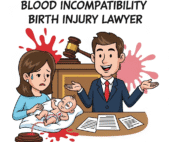Children with Cerebral Palsy (CP) often navigate a demanding landscape of therapies, medical appointments, school, and social interactions. While these activities are crucial for their development and well-being, the sheer volume can sometimes lead to a state of overwhelm and exhaustion known as burnout. Understanding the signs and implementing strategies for Avoiding Burnout in Kids with CP is essential to ensure they thrive without feeling depleted.
Understanding the Unique Risks of Burnout in Kids with CP
Several factors can make children with CP particularly susceptible to burnout, making proactive measures for Avoiding Burnout in Kids with CP critical:
- Increased Demands: The combination of therapies (physical, occupational, speech), medical appointments, and academic expectations can create a packed schedule.
- Physical Exertion: Navigating daily life with motor challenges often requires significant physical effort, leading to fatigue.
- Sensory Overload: Many children with CP experience sensory sensitivities, making busy environments and multiple stimuli draining.
- Communication Challenges: Difficulty expressing feelings of fatigue or overwhelm can delay intervention.
- Social Pressures: Wanting to fit in and participate in activities with peers can lead to pushing themselves beyond their limits.
- Internalized Pressure: A desire to please caregivers and therapists can lead to overexertion.
Recognizing the Signs of Burnout in Kids with CP
Early identification of burnout is key to Avoiding Burnout in Kids with CP. Look out for these potential signs:
- Increased Fatigue: Persistent tiredness that isn’t relieved by rest.
- Decreased Motivation: Loss of interest in activities they once enjoyed, including therapies.
- Irritability and Frustration: Increased emotional outbursts or a shorter temper.
- Physical Complaints: Frequent headaches, stomachaches, or other unexplained physical symptoms.
- Withdrawal: Social isolation or a reluctance to engage with family and friends.
- Regression: A temporary loss of previously acquired skills.
- Difficulty Concentrating: Trouble focusing on tasks or following instructions.
- Changes in Sleep or Appetite: Difficulty falling asleep, staying asleep, or significant shifts in eating habits.
Strategies for Avoiding Burnout in Kids with CP
Implementing proactive strategies is crucial for Avoiding Burnout in Kids with CP and fostering a healthy balance:
- Prioritize Rest and Downtime: Ensure adequate sleep and schedule regular breaks throughout the day. Quiet time for relaxation is essential.
- Balance Activities: Create a schedule that includes a mix of necessary appointments and enjoyable, low-pressure activities.
- Child-Led Activities: Encourage participation in activities that genuinely interest the child, allowing them a sense of control and enjoyment.
- Reduce Sensory Overload: Create calm and quiet spaces at home. Be mindful of sensory input during outings and appointments.
- Open Communication: Regularly check in with your child about how they are feeling, both physically and emotionally. Encourage them to express their fatigue or overwhelm.
- Teach Self-Advocacy: Empower your child to communicate their needs and limits to therapists, teachers, and caregivers.
- Flexibility and Adaptability: Be willing to adjust schedules and expectations based on your child’s energy levels and well-being. It’s okay to say no to extra commitments.
- Focus on Fun: Incorporate play and joyful activities into their routine. Laughter and enjoyment are powerful stress relievers.
- Collaboration with Therapists and Educators: Work with professionals to ensure therapy and educational goals are realistic and not overwhelming. Advocate for a holistic approach that considers the child’s overall well-being as key to Avoiding Burnout in Kids with CP.
- Celebrate Small Victories: Acknowledge effort and progress without solely focusing on achieving specific outcomes. This reduces pressure and fosters a positive mindset.
The Role of CP Family Help
CP Family Help understands the multifaceted demands on children with CP and their families. While not a direct provider of burnout prevention strategies, their website can be a valuable resource for Avoiding Burnout in Kids with CP by:
- Providing Information and Awareness: Offering articles and resources that highlight the importance of emotional well-being and the potential for burnout in children with CP.
- Connecting Families: Linking you with support groups and online communities where parents can share experiences and strategies for managing their child’s activity levels and preventing overwhelm.
- Offering a Holistic Perspective: Emphasizing the importance of balancing therapies and medical needs with the child’s overall quality of life and enjoyment, a key aspect of Avoiding Burnout in Kids with CP.
- Empowering Parents: Providing a platform for information sharing and mutual support, which can equip parents with the knowledge and confidence to advocate for their child’s need for rest and a balanced life, crucial for Avoiding Burnout in Kids with CP.
Conclusion: Nurturing Well-being and Preventing Overwhelm
Avoiding Burnout in Kids with CP requires a conscious and ongoing effort to prioritize their overall well-being. By recognizing the unique risks, watching for the signs, and implementing proactive strategies that emphasize rest, balance, and open communication, parents and caregivers can help children with CP thrive without reaching a point of exhaustion. Resources like CP Family Help can be valuable allies in this endeavor, providing information and connection to support a balanced and fulfilling life for children with CP and their families in Avoiding Burnout in Kids with CP.
Frequently Asked Questions (FAQ)
How much therapy is too much for a child with CP?
The ideal amount of therapy varies for each child. It’s crucial to monitor for signs of fatigue and discuss any concerns with therapists to ensure a balanced approach that avoids contributing to Avoiding Burnout in Kids with CP.
What are some calming activities I can incorporate into my child’s routine?
Quiet activities like reading, listening to music, drawing, gentle stretching, or spending time in nature can help promote relaxation and aid in Avoiding Burnout in Kids with CP.
How can I help my child communicate when they are feeling overwhelmed?
Provide them with simple ways to express their feelings, such as using a visual scale or specific words. Validate their emotions and create a safe space for them to share when they need a break, important steps in Avoiding Burnout in Kids with CP.
Should I push my child to participate in activities even if they seem tired?
It’s important to encourage engagement, but also to respect your child’s limits. Pushing them when they are genuinely fatigued can contribute to burnout. Finding a balance is key to Avoiding Burnout in Kids with CP.
How can I advocate for my child’s need for downtime with their therapists and educators?
Openly communicate your observations about your child’s energy levels and stress. Collaborate on creating a schedule that allows for sufficient rest and incorporates the child’s overall well-being as a priority in Avoiding Burnout in Kids with CP.
Are there any specific resources that address burnout in children with disabilities?
While not solely focused on CP, resources related to stress management, sensory processing, and child mental health can offer valuable insights into Avoiding Burnout in Kids with CP. Disability-specific parent support groups can also provide helpful advice.
What can I do if I suspect my child is already experiencing burnout?
Reduce their scheduled activities, prioritize rest and quiet time, and focus on activities they genuinely enjoy. If symptoms persist, consider seeking guidance from a healthcare professional or child psychologist experienced in working with children with disabilities to address Avoiding Burnout in Kids with CP and promote recovery.
👉 Fill out our FREE Consultation Form today to speak with a legal expert. Your case could make a difference.




